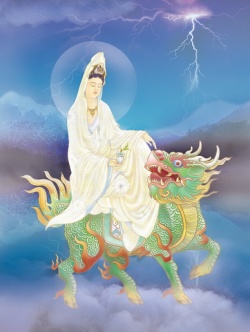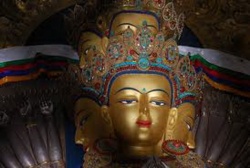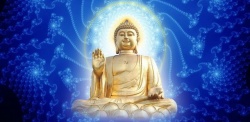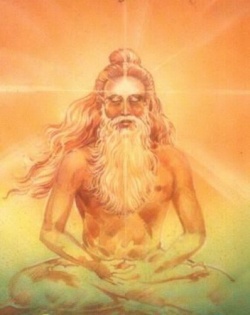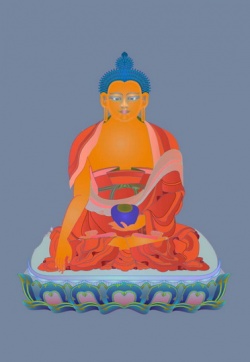History of Indian Materialism
There are two ways of reading philosophy: Philosophical-doctrinal and Historical-textcritical. The first approach does not pay much attention to the growth and development of a philosophical system and treats the doctrine as a whole. The second approach, on the other hand, studies a philosophical system from its inception through further developments till it ceases to grow or stops at a state when it is still growing. The two approaches should be considered complementary, not contradictory. I propose to follow the second approach in order to get a more comprehensive view of a system. .
The history of materialism in India is much older than the Cārvāka, also known as Lokāyata. Two doctrines, bhūta and svabhāva, are mentioned in the Śvetāśvatara Upanisad (not later than third century BCE). Both the names are associated with the later developments of materialism. In the early centuries of the common era there were several pre-Cārvāka materialist views in South India as mentioned in the old Tamil epics.
The word cārvāka as the name or nickname of a system of philosophy as also of its followers is not encountered before the eighth century CE. The other name, Lokāyata, in the Buddhist tradition (both Pali and Sanskrit, Mahāyāna and Hīnayāna) does not mean materialism: it signifies Vitandāśāstra, the art of disputation. By the eighth century the two names, Cārvāka and Lokāyata, along with another, Bārhaspatya (relating to Brhaspati, the mythical guru of the gods) are used interchangeably to signify materialism. Another oft-used term, nāstika, means the denier of the other-world but also the defiler of the Veda (and many more). In the first sense the Cārvākas alone are to be called so, but the same word is employed against the Buddhists and the Jains in the second sense. The names mentioned by the opponents of materialism, such as dehātmavāda, bhūtacaitanyavāda, tajjīva-taccharīravāda, and the like, are used mainly to suggest the Cārvāka/Lokāyata.
There was at least one base (mūla) text of the Cārvākas, a collection of aphorisms (sūtras) attributed to Purandara. There were several commentaries, no fewer than five, on this or some other base text. They were composed by Aviddhakarna, Udbhata Bhatta (Bhattodbhata), Kambalāśvatara, Purandara, and Bhāvivikta. Extracts from the commentaries of the first four are found in the works of the Brahminical, Buddhist and Jain opponents of materialism. There are reasons to believe that there were other commentators of the Cārvākasūtra too.
At the present state of our knowledge it is impossible to be definite about the origin and growth of the Cārvāka/Lokāyata. However, it can be asserted that it was a living philosophy from the eighth century CE to the twelfth century CE after which this system seems to have disappeared without leaving any trace. The reason for this sudden disappearance is not known. It is nevertheless certain that when Sāya a-Mādhava compiled his digest of all philosophies (Sarva-darśana-samgraha) in the fourteenth century CE, he had no Cārvāka/Lokāyata text to quote from, or even refer to.
The earliest known materialist (rather proto-materialist) is Ajita Kesakambala, a senior contemporary of the Buddha (sixth/fifth century BCE). After a long gap, in the early Common Era we have the mention of three materialist schools in the Tamil epic, Manimēkalai (between the fourth century and the seventh century CE). It is only in the eighth century CE that Kamalaśīla quotes a few Cārvāka aphorisms verbatim in his commentary on the Tattvasamgraha, a polemical work written by his preceptor, Śāntaraksita. In several Brahminical, Buddhist and Jain works (written between the eighth century and the twelfth century CE) more such aphorisms are quoted. They are concerned mostly with the following issues:
a) The first cause (jagat-kārana)
b) Relation of consciousness to matter
c) Nature of the spirit or self or soul (ātman )
d) Rebirth and the other-world (paraloka)
e) Efficacy of the performance of sacrificial rites (yajña)
f) The valid instrument(s) of cognition (pramāna)
All the items mentioned above were controversial. A sharp line was thus drawn between idealism and materialism, on both ontological and epistemological grounds. It is evident that the Cārvāka/Lokāyata epistemology was tailor-made to defend its ontological positions.
Since our knowledge of materialism in India is derived wholly from the works of its opponents, it is difficult to be certain about the social and ethical outlook of the materialists. The charge of hedonism brought against the Cārvāka/Lokāyata appears to have no basis, for no aphorism is quoted by the antagonists which they do when they try to refute other views of the Cārvākas . The one verse found at the end of the Sarva-darśana-samgraha (SDS), chapter 1, which urges people to drink clarified butter even by incurring debt (mam krtvā ghrtam pibet) is a gross distortion of the original reading of the half-line, “nothing is beyond the ken of death” (nāsti mrtyor agocarah). The first reading is found in only one instance, the SDS; in thirteen other occurrences of this verse there is no mention of either borrowing or of clarified butter. Amusingly enough, in the SDS, the original version is quoted first at the beginning of the chapter but at the end the distorted version is offered. If Krsnamiśra and Śrīharsa are to be believed, the Cārvākas were opposed to gender discrimination and casteism (see the Prabodha-candrodaya, Act 2 verse 18 and the Nai adha-carita, Canto 17 verses 40, 42, and 58).
A few verses of doubtful origin have been attributed to the Cārvākas in several compendia and digests of philosophy. Some of them oppose animal sacrifice and flesh-eating and may be of Buddhist and/or Jain origin. Other verses that deny the alleged result achieved by performing post-mortem rites may genuinely reflect the materialist view. The thrust is no doubt anti-Vedic, or rather against the religious acts ordained by the canonical law- books (dharmaśāstras). But it is doubtful whether such an attitude was the focus of the materialist tradition in India. More probably the anti-religious attitude was the logical corollary of its epistemology and ontology.
At least one parable, the parable of the wolf’s footprint, is of pre-Cārvāka origin, as it is alluded to in the Mahābhārata (Mbh) (critical edition, 12.132.2; Vulgate edition, 12.134.2). The parable was supposed to teach a moral: inference unsupported by perception may lead to wrong conclusions. The parable, however, has been widely used both by the Buddhists and the Jains to represent the Cārvāka view. Some other verses (such as viśese’nugamābhāvāt sāmānye siddhasādhanāt, etc., ‘No concomitance being possible in the case of the particular and there being the charge of “proving the proved” in the case of the universal’, etc.) representing the epistemological position of the Cārvākas may reflect the view of one or the other Cārvāka philosopher but such versified versions appear to have been composed by their critics while representing the opponent’s view (pūrvapaksa). They may not be verbatim quotations.
The verses attributed to the Cārvākas, in any case, could not have been the pivot of the Cārvāka system. Like many other philosophical systems in India the Cārvāka/Lokāyata too developed along the line of a base text followed by its commentaries and sub- commentaries. The verses are mere popular sayings (ābhānaka and lokagāthā) passing from mouth to mouth, generation after generation till they were written down.
There are, however, reasons to believe that the pre-Cārvāka materialist views too were orally transmitted. The epistemological position was not stated clearly and unambiguously: only the ontological views were declared, mostly in terms of a series of negations, such as: no soul without the body, no after-life and no after-world, no merit in performing sacrificial rites and in paying gifts to Brāhmins, etc. The epistemological grounds of these views were first formulated by the school that came to be known first as the Lokāyata (and then as the Cārvāka) somewhere around the sixth century CE. To search for any unbroken thread from Ajita Kesakambala to Bhattodbhata (the last known commentator) will not bear fruit, for there are so much of temporal gap and so many missing links between the proto-materialist ideas and the base text (as well as the commentaries thereon) which came to replace all earlier materialist views. Purandara is said to have been the author of a sūtra-work as well as of a vrtti (exposition, most probably an auto-commentary). There are other commentators like Aviddhakar a who may have been Naiyāyikas writing commentaries on the Cārvākasūtra without being converted to materialism.
There is no way of knowing whether the materialists had a large following in either South India or elsewhere. Nevertheless, materialism as a system of philosophy was considered a formidable adversary by all the orthodox (Vedic) schools, such as Vedānata and Nyāya-Vaiśesika, as well as by the heterodox (anti-Vedic) schools, such as the Buddhist and the Jain. In the centuries of great debate, between the eighth century and the twelfth century, the Cārvāka/Lokāyata has been criticized, slandered, and ridiculed not only in philosophical literature but also in poetry and drama. This is an indication of the great weight and potential worth of materialism in the Indian philosophical tradition.
What is badly needed now is a philosophical map and a time-chart, however tentative they may be, to locate and ascertain where and when so many philosophical systems in India arose and spread to other regions at which points of time. A particular variety of Śaivite philosophy originated in Kashmir; the Pāśupata doctrine owes its birth to South India, and Navya Nyāya spread from Mithilā to the Navadvīpa region of South Bengal as late as the fifteenth century. Prābhākara Mīmāmsā, which was predominant in Rādha (a part of southern Bengal) at least in the tenth century thus lost its ground. Similar instances will be found in other parts of India too. Kāśī (Varanasi) was long known to be the place of confluence of all philosophical systems, at least the pro-Vedic ones. Buddhist philosophy flourished mainly in upper India, although there were adherents in South India as well. Jain philosophy had its centre in Western India, particularly in Gujarat and Rajasthan. Only when the map is drawn and the time-chart is prepared we shall be able to envisage the whole philosophical scene properly.
Reading List:
Besides the histories of Indian philosophy by S. N. Dasgupta, Jadunath Sinha, and Erich Frauwallner, the following books are to be consulted:
Debiprasad Chattopadhyaya. Lokāyata. New Delhi: People’s Publishing House, 1959 (often reprinted).
Debiprasad Chattopadhyaya. In Defence of Materialism in Ancient India. New Delhi: People’s Publishing House, 1989.
Debiprasad Chattopadhyaya and Mrinal Kanti Gangopadhyaya. Cārvāka/Lokāyata. New Delhi: Indian Council of Philosophical Research, 1990.
Debiprasad Chattopadhyaya. Bhārate Vastuvāda Prasa ge. Kolkata: Anushtup, 1993 (recently reprinted).
Dakshinaranjan Shastri. Cārvāka Darśana. Kolkata: Paschimbanga Rajya Pustak Parsat, 1982.
Ramkrishna Bhattacharya. Studies on the Cārvāka/Lokāyata. Firenze (Florence): Societa Editrice Fiorentina, 2009; New Delhi: Manohar Books, 2010.
Ramkrishna Bhattacharya. Cārvākacarcā. Kolkata: Sadesh, 2010.

